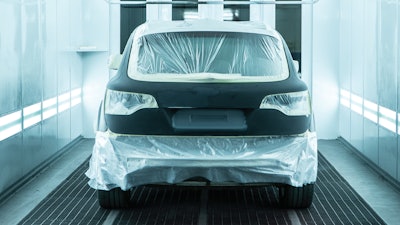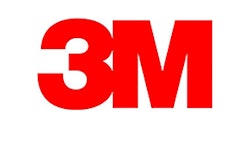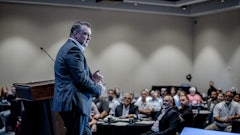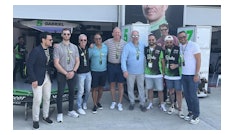

And, as vehicles become increasingly equipped with Advanced Driver Assistance Systems (ADAS), the collision repair industry faces an ever-evolving challenge: ensuring the refinishing process doesn’t compromise the performance of these sophisticated systems. While refinishing technology has long been a core competency in collision repair, the integration of ADAS presents a unique intersection of precision, technology and safety that demands new considerations. Luckily, just as automotive repair continues to change, so too does the industry continue to rise to meet the learning curve, with repairers and companies alike more than ready to weigh-in on the present tech that makes the vehicles of today feel like ones from the future.
Notably, while “it’s no longer business as usual,” when it comes to today’s vehicles, the demand for quality and precision remains the same, says Troy Knopik, 3M Automotive Aftermarket Application Engineer and Bill Suzuki, 3M Canada Automotive Aftermarket Application Engineer.
“At the 3M Skills Development Center training classes, we emphasize following OEM repair procedures, including paint specifications, to avoid any potential liabilities. When it comes to ADAS, proper training is crucial, as incorrect refinishing can compromise the safety of both the driver and others on the road.”
“Calibrations are also vital to ensuring ADAS systems function correctly after repairs. Additionally, when refinishing components like bumpers, repairers should ensure that they pull the correct repair sheet every time,” Knopik and Suzuki further note.
 Troy Knopik, 3M Automotive Aftermarket Application Engineer
Troy Knopik, 3M Automotive Aftermarket Application Engineer
Aftermarket Application Engineer

Manager, Canada.

Gordon Wry, Axalta Training Instructor
at Axalta Refinishing Academy
From automatic systems and high voltage features to the increasing inclusion of artificial intelligence, repairing today’s vehicles is not unlike rebuilding a computer— just with more panels and pieces involved.
And, when it comes to refinishing parts of a vehicle with ADAS components included, repairers “should first and foremost pay attention to paint mixtures and mil thickness requirements,” Knopik and Suzuki further stress.
“Excessive thickness can hinder sensor performance or calibration. To mitigate this, file handlers and blue printers should verify repair procedures during the planning phase.”
Similarly, for Brad Kruhlak, AkzoNobel Technical Manager, Canada, when it comes to refinishing vehicles with ADAS components, precision is the name of the game and repairs are all in the details.
Alongside concerns regarding paint thickness, “vehicle manufacturers have identified specific colours that may negatively impact radar performance when applied in a radar zone during refinishing operations.”
As a result of these potential pigment problems, “when requested by the OEM, paint manufacturers develop new formulas for these colours. These reformulated colours are then subjected to specialized testing by the OEM to ensure compatibility with the technology before receiving approval.” However, Kruhlak further highlights that “colour formula approval and accurate mixing aren’t the only things to consider when repairing vehicles with ADAS. A coating system’s film build is typically another critical consideration when dealing with radar systems.”
“Manufacturers often provide parameters for film build—even for specific paint system layers such as the undercoat, basecoat and clearcoat. Additionally, body fillers, putties, plastic welds and staples are all prohibited in radar zones. Even sanding and buffing procedures in these areas may need to be considered.”
Finally, it’s important to recognize the degree to which a vehicle component with ADAS features can be repaired or refinished, says Gordon Wry, Axalta Training Instructor at Axalta Refinishing Academy.
“Some manufacturers only allow a bumper, for instance, to be painted once,” notes Wry. “If over application [of paint] causes calibration issues, it renders that bumper useless and another will have to be ordered and refinished properly, potentially driving up the shop’s cost of repairs.”
Moreover, in ensuring that no mishaps lead to damaged or malfunctioning parts, repairers should ensure that there are “no plastics in Lidar transmission areas and to remain aware that scratches or overspray on the front or backside of ADAS features, like the bumper, may affect transmission. So, masking the backside of the bumper in the transmission areas may be necessary to protect them.”
To help avoid overcoating, “use value shade primers or sealers to limit the number of basecoats,” suggests Wry and “always keep in mind that there are tinting restrictions.” In this way, as the automotive coatings experts here emphasize, every detail—from paint thickness to calibration protocols—plays a crucial role in the success of the repair. The demand for quality remains as high as ever, and while the complexity of modern vehicles may present new challenges, it also opens the door to opportunities for those who are committed to ongoing learning and innovation.
As Wry succinctly puts it, at the end of the day, it all comes down “to being prepared to do your homework.”




















